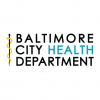Note From The Commissioner: Reducing Falls, Protecting Our Seniors
Friday Apr 20th, 2018
It’s been a busy week at the Baltimore City Health Department! We announced the opening of a new school-based health center; joined the Mayor to sign two public health bills into law; participated in Light City and the March for Science; worked with Congressman Cummings and Senator Warren to support new legislation to establish a “Ryan White” for the opioid epidemic; hosted Law Day to support seniors and Precious Purple Sunday to support maternal and child health; issued a citywide warning for synthetic marijuana; and sued the Trump Administration. Please read on for these and other updates—and hear more on WYPR’s HealthWatch episode.
In this letter, I want to focus on the official launch of the citywide Falls Reduction Public Campaign and Strategy. Falls among older adults are a growing public health concern. Over three million older Americans visit the ER each year for falls; in Baltimore City, that’s nearly 5,000 seniors who fall. Each fall leads to an average hospitalization cost of $39,000. If we extrapolate, that means the cost of falls to Baltimore City – for medical costs alone – is $60 million.
But it’s not just about cost – it’s about health. Twenty-five percent of seniors who fall and break their hips will die within a year. Many of those who survive may no longer be able to care for themselves. They may have previously been caregivers to spouses, grandchildren, and parents – now, they need others to care for them. Falls can lead to physical health issues, mental health concerns, and social isolation.
That’s why, under Mayor Pugh’s leadership, and with the partnership of many across the City, we are taking an innovative, science-based, three-pillar approach to reducing falls.
First, we map out where falls are occurring. Last year, the Health Department initiated the Baltimore Falls Reduction Initiative Engaging Neighborhoods and Data – B’FRIEND. Through B’FRIEND, we obtain data from hospitals about where our older adults are falling. That means we receive near real-time information on falls at all ERs in Baltimore. We can then identify “hotspots,” investigate reasons for falls, and immediately use the information to advise community partners on where to locate interventions.
Second, we target interventions at these hotspots. There are multiple reasons for falls including medication interactions, vision problems, and structural barriers such as clutter or unstable railings. There are hazards in everyday things like area rugs and unsafe footwear. Simple solutions, such as glasses, or moving down a light fixture, or using an assisted device to stand up and walk can make the difference and prevent people from suffering from brain bleeds or broken bones.
Third, we will be launching a public education campaign. We are working with our partners to identify messaging and test them with older adults in Baltimore. The campaign will include posters in over 100 senior buildings, door hangers placed in senior residences, and flyers given out where older adults are.
Our goal is to reduce the rate of falls in Baltimore City by 20 percent over the next 10 years. That’s a reduction in nearly 1,000 falls annually. Our estimate for a reduction in medical costs is up to $14 million per year, not to mention the lives saved and the human impact on seniors and their families.
Together, under Mayor Pugh’s leadership, we can accomplish our goal and continue to make Baltimore City the best place to age.
Leana Wen, M.D., M.Sc.
